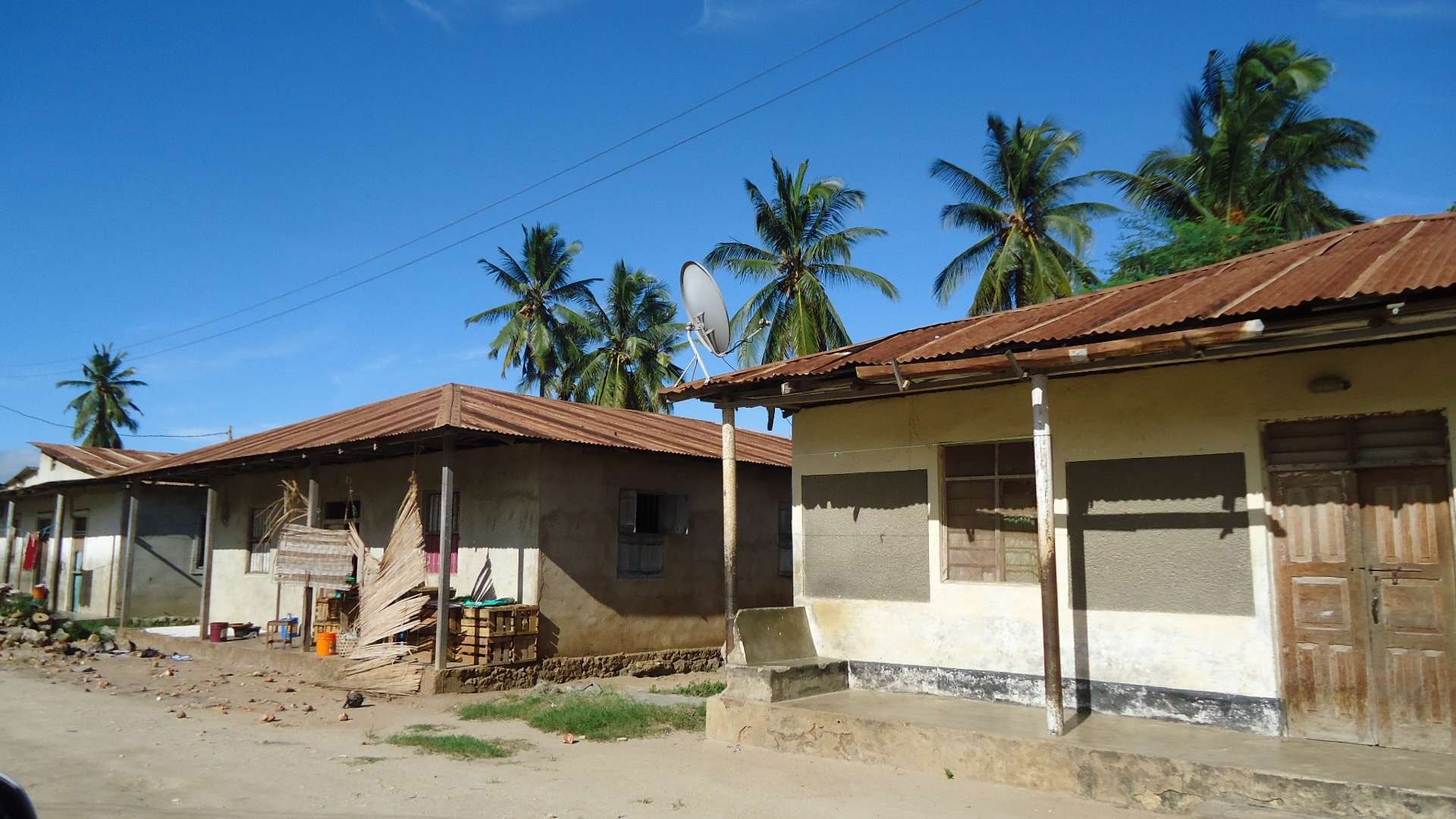Introduction

Characteristics of Rural and Urban Areas
Rural and Urban areas are settings where human beings make their living. They differ in a number of ways; from the type of infrastructure, population, type of foods consumed and so on. Another difference is on how people making their living in both areas.
Sure, here are 10 differences between rural and urban livelihood:
Population density. Rural areas have a much lower population density than urban areas. This means that there are fewer people living in a given area, which can lead to a different way of life.
Occupational structure. Rural areas tend to have a higher proportion of people working in agriculture, while urban areas tend to have a higher proportion of people working in non-agricultural sectors, such as manufacturing, services, and government.
Income levels. Rural areas tend to have lower income levels than urban areas. This is due to a number of factors, including the lower productivity of agriculture and the higher cost of living in rural areas.
Education levels. Rural areas tend to have lower education levels than urban areas. This is due to a number of factors, including the lack of access to quality education in rural areas and the lower priority placed on education in rural communities.
Healthcare. Rural areas tend to have poorer healthcare than urban areas. This is due to a number of factors, including the lack of access to quality healthcare in rural areas and the higher cost of healthcare in rural areas.
Infrastructure. Rural areas tend to have poorer infrastructure than urban areas. This is due to a number of factors, including the lower priority placed on infrastructure in rural areas and the higher cost of infrastructure in rural areas.
Access to markets. Rural areas tend to have less access to markets than urban areas. This makes it more difficult for rural residents to sell their products and services and to access the goods and services they need.
Social isolation. Rural residents tend to be more socially isolated than urban residents. This is due to the lower population density in rural areas and the greater distances between rural communities.
Culture. Rural areas tend to have a stronger sense of community and a more traditional culture than urban areas. This is due to the fact that rural residents are more likely to know their neighbors and to have a shared history and culture.
Environmental quality. Rural areas tend to have better environmental quality than urban areas. This is due to the lower population density in rural areas and the greater abundance of natural resources in rural areas.
It is important to note that these are just generalizations, and there is a great deal of variation within both rural and urban areas. There are many rural areas that are prosperous and have excellent infrastructure and healthcare, and there are many urban areas that are struggling with poverty and crime.

Which setting do youth prefer the most between rural and urban settings?
Rural and Urban; While discussing this matter it is important to note that there is no one-size-fits-all answer to this question, as the preferred setting for youth will vary depending on individual preferences and circumstances. However, some general trends can be observed.
Rural and Urban; In general, youth tend to prefer urban settings over rural settings. This is likely due to a number of factors, including the greater availability of opportunities and resources in urban areas. Urban areas tend to have more job opportunities, better schools, and more cultural and recreational activities. They also tend to be more diverse, which can be appealing to youth who are looking for a more cosmopolitan experience.
However, there are also some advantages to living in rural areas. Rural areas tend to have a slower pace of life, which can be appealing to youth who are looking for a more relaxed environment. They also tend to have cleaner air and water, and they may offer more opportunities for outdoor activities.
Ultimately, the best setting for youth will depend on their individual needs and preferences. Some youth may thrive in the hustle and bustle of an urban environment, while others may prefer the peace and quiet of a rural setting. There is no right or wrong answer, and it is important for youth to explore their options and find the setting that is best for them.
Here are some additional factors that may influence a youth’s preference for a rural or urban setting:
Family and friends. If youth have strong ties to their family and friends in a rural area, they may be more likely to prefer to live there.
Cost of living. The cost of living can be significantly higher in urban areas than in rural areas. This can be a major factor for youth who are on a budget.
Access to education and healthcare. Rural areas may have limited access to quality education and healthcare. This can be a major factor for youth who are looking for the best possible opportunities for their future.
Personal preferences. Ultimately, the best setting for youth will depend on their individual preferences. Some youth may prefer the hustle and bustle of an urban environment, while others may prefer the peace and quiet of a rural setting.
Is the rural Urban Migration Alarming in Developing Countries?
The rural-urban migration is a phenomenon that has gained significant attention in developing countries in recent years. It refers to the movement of people from rural areas to urban centers in search of better economic opportunities and improved living conditions. While this trend might seem promising for urban development, it poses several challenges and concerns that need to be addressed. This essay explores whether the rural-urban migration is alarming in developing countries.
One of the major concerns associated with rural-urban migration is the strain it puts on urban infrastructure and services. As people move from rural areas to cities, the population in urban centers rapidly increases. The existing infrastructure, such as housing, transportation, water, and sanitation systems, often cannot keep up with the pace of growth, leading to overcrowding and inadequate facilities. This places a burden on already limited resources and can result in increased social and environmental problems.
In addition to straining urban infrastructure, rural-urban migration also contributes to a rise in unemployment rates in cities. As more people flood into urban areas, there is fierce competition for limited job opportunities. The lack of suitable employment options often leads to underemployment or even unemployment for many migrants. This not only exacerbates poverty levels but also fuels social and economic inequalities within urban areas.
Furthermore, the rural-urban migration often leads to the neglect and abandonment of rural regions. As people leave the countryside, the opportunities for development and growth decrease, resulting in a vicious cycle of poverty and dependency. This neglect of rural areas can have severe consequences, such as declining agricultural productivity, food insecurity, and a loss of cultural heritage.
Another alarming aspect of rural-urban migration is the strain it puts on urban social services, such as education and healthcare. The sudden increase in population in urban areas overwhelms existing public institutions, leading to overcrowded schools and understaffed hospitals. As a result, the quality of education and healthcare services deteriorates, affecting both migrants and existing urban residents.
Moreover, rural-urban migration often contributes to the formation of slums and informal settlements in cities. Unable to afford proper housing, migrants often resort to living in makeshift dwellings in urban fringes. These informal settlements lack access to basic services, are prone to health hazards, and create an environment of social exclusion. The growth of such slums perpetuates inequality, further marginalizing vulnerable groups within society.
However, it is important to acknowledge the positive aspects of rural-urban migration as well. It can lead to increased economic productivity, as migrants often contribute to urban industries and businesses. The influx of ideas, skills, and diverse perspectives can also foster innovation and economic growth in urban areas. Moreover, migrants’ remittances to their rural families can alleviate poverty and improve living conditions in rural areas.
To mitigate the negative impacts of rural-urban migration, it is essential for developing countries to implement comprehensive policies that address the challenges faced by migrants and the strain on urban infrastructure. Investing in rural development, such as improving agriculture, creating job opportunities, and providing basic services, can reduce rural-urban migration and its negative consequences. Additionally, urban planning should prioritize affordable housing, expand public services, and invest in sustainable urbanization to accommodate the growing population.
Conclusion on Rural and Urban Migration
In conclusion, while rural-urban migration in developing countries can bring both positive and negative outcomes, it is evident that there are alarming aspects that must not be overlooked. The strain on urban infrastructure, rising unemployment, neglect of rural regions, pressure on social services, formation of slums, and social exclusion are concerning issues that need to be addressed by those in authority and the community itself. By implementing comprehensive policies that focus on rural development and sustainable urbanization, these negative consequences can be mitigated, ensuring a balanced and inclusive approach toward urbanization.


1 thought on “Discover 10 Differences Between Rural And Urban Livelihood”